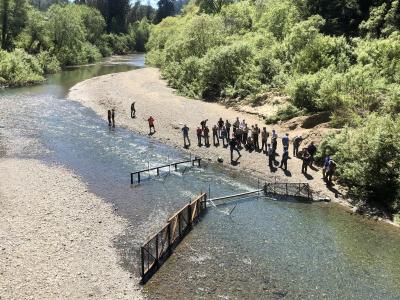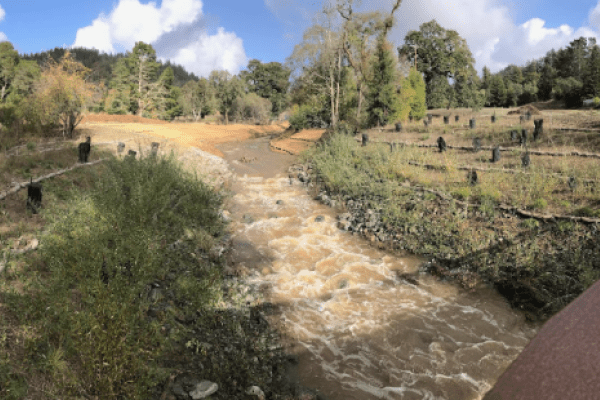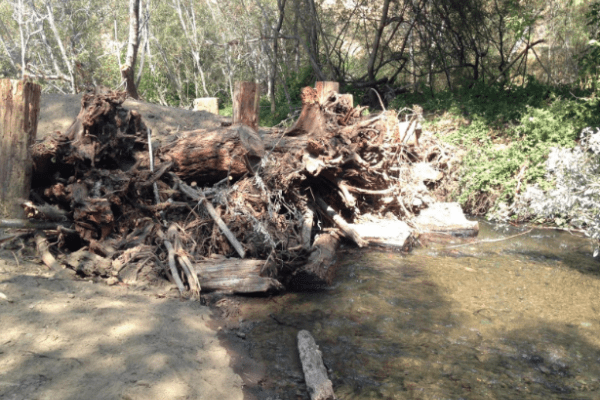Holding Space—Restoring Habitat and Making Room for Innovation
March 26 - 29, 2024
Takeaways Gleaned While Restoring Habitat in the Lagunitas Creek Watershed & Learning About New Projects on the Horizon
27 March 2024
9:00am - 5:00pm
Field Tour Coordinators: Sarah Phillips, Marin RCD and Eric Ettlinger, Marin Water District
Lagunitas Creek watershed supports the largest population of wild coho salmon in the CCC ESU. A key factor limiting coho salmon survival in Lagunitas Creek is access to high quality winter habitat. Such habitat provides shelter from predators, high flow refuge, and opportunities for feeding and growth. The Marin Municipal Water District (Marin Water) enhanced coho salmon winter habitat over two miles of lower Lagunitas Creek by reconnecting historic secondary channels and installing large wood structures. These structures included Bar Apex Jams, which combine multiple logs to mimic the old-growth logs no longer found in the watershed, and Debris Retention Jams, which were intended to aggrade the streambed. While the project achieved many of its design objectives, this tour will highlight aspects of the project that were less than successful. To paraphrase Thomas Edison, the efforts undertaken weren’t failures, but they provide many opportunities to identify bad ideas. Issues discussed during this tour included evaluating impacts and benefits to existing habitat, understanding sediment dynamics when attempting stream aggradation, floodplain processes and evolution, revegetation planning, and working successfully with partner agencies.
Additionally, the tour visited the most productive tributary to Lagunitas, San Geronimo Creek, to check out a more recently implemented project by SPAWN, designed by ESA. The site includes a 100-year old dam that was removed from a former golf course in order to provide year-round access to critical habitat based on the dam being one of the highest priority fish barriers in Central CA. It created and restored an estimated five acres of creek habitat, including activities such as; widening of floodplains, a new side channel, innovative ‘tree islands,’ and upland habitat vegetation restoration. The site is now called “Roy’s Riffles” instead of “Roy’s Dam.”
Finally, we heared about an exciting up and coming project on that same former golf course property where many partners have come together in a collaborative means to design an innovative habitat restoration project with ESA’s design team. The lead on the project includes TU with its supporting partner who is also the landowner, the Trust for Public Lands. The collaborative design process has also included local agencies that contribute by participating on the Technical Advisory Group (TAG).





